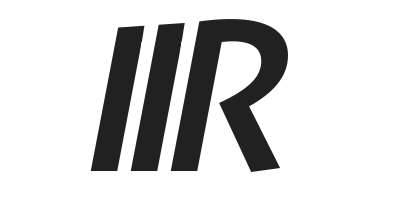Awesome


Create React App with React Router 4 and MobX State Tree and Internationalization
This project is a boilerplate for a quickstart development with create-react-app + React Router 4 and MobX / MobX-State-Tree to maintain the state of the App and a custom internationalization module component.
This boilerplate doest not implement custom-react-scripts anymore but if you want to to be able to implement @decorators and CSS Modules for Sass/Less/Stylus implementations check that repository to learn how to implement it. Or just check the "official way" of implementing this with Create React App with CSS Modules at the create-react-app repository.
I'm not interested in creating an opinionated boilerplate with strict rules about how to do stuff. The beauty of Javascript is that, you can do it as you want, the way you feel more confortable with so, you should modify the project structure as you want while it's easier for you to work with, also changing any other aspect of the execution.
Built with 3RMXi
The following projects are built with 3RMXi, some of them are big, some of them are examples:
Asynchronous Fetching from Github
What does 3RMXi includes?
- Create React App - React Apps with no build configuration.
- MobX - Simple, scalable state management.
- Mobx State Tree - Opinionated, transactional, MobX powered state container.
- Styled Components - Visual primitives for the component age.
- CSS Modules - Use SASS/SCSS/Less/Stylus/etc without ejecting.
Getting Started
To get started using this boilerplate you only need to follow a few steps. First of all
you should run yarn on your favorite terminal to initialize Yarn and install all the required
dependencies.
If you want to start developing your project you should run yarn start, this will generate
a development build (without optimizing the code for easy debug and all that stuff) based on a webpack dev-server
with hot-reload and all those cool development features that we, programmers, love.
If you want a production build of your project you should run yarn build, this will create a build folder in the root
directory of the project and bundle your src folder and optimize all the code to get the best possible performance. This build will be minified and the filenames will include the hashes.
Your app will be ready to be deployed!!
PS: This development and build process is exactly the same as you will do with react-create-app.
Internationalization
I've created an Language component just for you to handle internationalization (i18n) the easiest way ever possible.
But it's not all sorcery and auto-magic stuff. You need a little configuration, but don't worry, it's painless (I think...).
First of all you should see a stores folder in the root of your project. This folder is where all the Stores for MobX "should be"
created. If you take a closer look at the files inside, you should see a language.js file, well, this is the file that handles all the
Language State stuff like: current language, change language, and a few more easy configurations.
Note: This will be improved in a future (sooner than expected) release to handle automatically all your language resource files but, meanwhile, you will need to do this little thing manually.
The first thing you will see at this file will be the following lines:
import esES from '../language/i18n/es';
import enUS from '../language/i18n/en';
Well, technically will be this:
import { types } from 'mobx-state-tree';
import esES from '../language/i18n/es';
import enUS from '../language/i18n/en';
But we will skip the first line for the sake of brevity because it's just MobX-State-Tree imports :)
Now let's take a look where this things come from. This language files will contain a single javascript object with
a key/value structure so we can easily access the language resource that we need.
Let's look at an example:
// ENGLISH LANGUAGE RESOURCES
const RESOURCES = {
CHANGE_SPANISH: 'Change to Spanish',
CHANGE_ENGLISH: 'Change to English',
USER_TITLE: 'User',
XP_TITLE: 'Experience',
AGE_TITLE: 'Age',
APP_DESCRIPTION: 'React Create App with React Router and MobX and Internationalization.',
ACTIONS: {
INCREASE_XP: 'Increase Experience Points!',
CHANGE_NAME: 'Change My Name!',
CHANGE_LASTNAME: 'Change My Last Name!'
}
};
export default RESOURCES;
As you can see, we've defined for example a CHANGE_SPANISH key with a value of 'Change to Spanish'.
At the very last line of the file, we export this object to access it from the Language Store.
Note that this Keys should be exactly the same in each of the language files you create. If the key resource is not found
nothing will be shown (I don't want to throw exceptions and all that stuff that breaks and stops the app). If you want it, you can create a function that process the required key resource to see if it exists or it's not empty and the Language component.
Now, to change the current App Language you only need to call (previously injected language store at the desired component) this.props.language.changeLanguageTo('es') from anywhere inside that component (an onClick={} method for example) and if it's a valid key the one you passed to the method it will automatically change the language, the resources and re-render the <Language resource="CHANGE_SPANISH" /> with the new CHANGE_SPANISH value, in this case, will replace 'Change to Spanish' with 'Cambiar a Español'. It's not that hard, see?
You can also see that you have the possibility to use nested language resource objects for a more structured language organization. To have access to this nested language resource objects you only need to call the language component with the following structure <Language resource="ACTIONS.INCREASE_XP" /> for example and will render the given resource string into the component. Piece of cake!
Note: You should look at the <Language /> react component located at src/components/language to see that it's not a big deal, it just injects the LanguageStore and being an @observer so it will re-render when an @observable property (in this case, language.resource[resource]) has changed.
Hope you find this useful.
Enjoy!